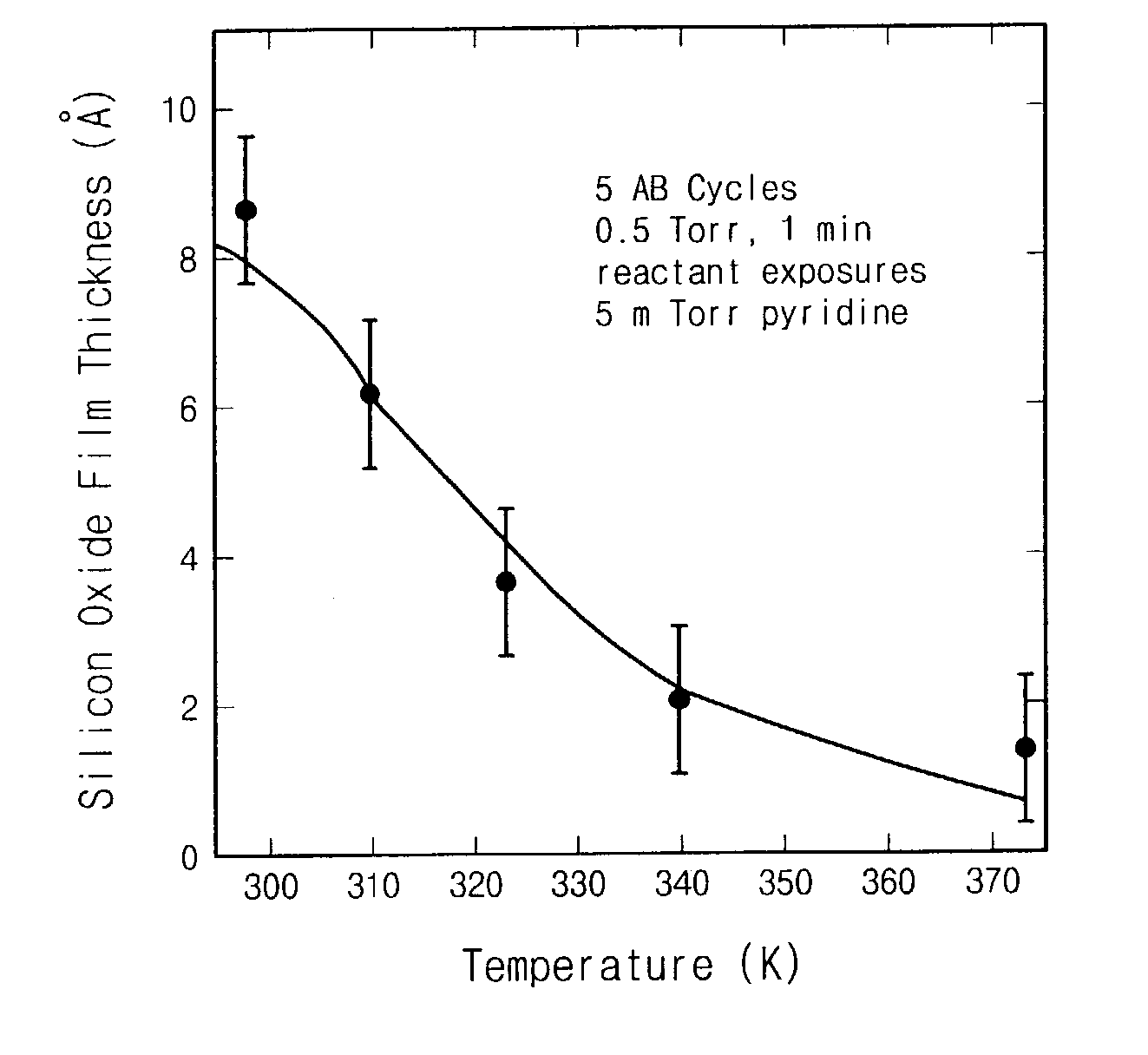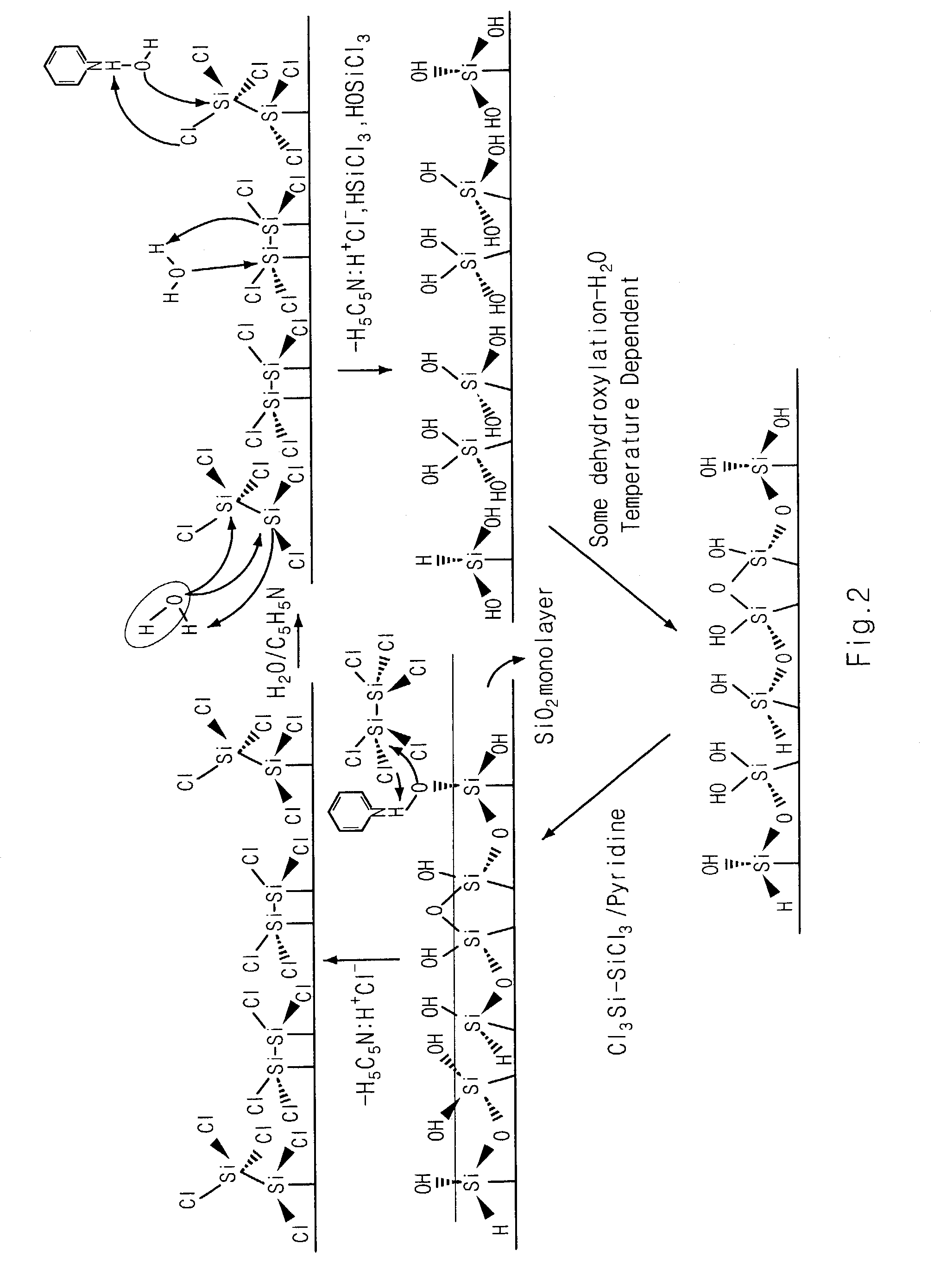Method for atomic layer deposition (ALD) of silicon oxide film
a silicon oxide film and atomic layer technology, applied in the direction of polycrystalline material growth, chemically reactive gas growth, crystal growth process, etc., can solve the problems of low deposition rate of thin film, deterioration of thin film properties, and inability to easily remove, so as to improve the deposition rate and high deposition rate
- Summary
- Abstract
- Description
- Claims
- Application Information
AI Technical Summary
Benefits of technology
Problems solved by technology
Method used
Image
Examples
example 1
Variation in Deposition Rate of Silicon Oxide Film Depending on Increase in Amount of HCD Source
[0045]The following experiment was conducted to find out the deposition rate of silicon oxide film depending on the increase in the amount of HCD source. HCD where the flow rate varies as shown in FIG. 4 and pyridine having a flow rate of 100 sccm were provided to a chamber. Residual sources in the chamber were then removed by pumping until the pressure reaches 1 mTorr. Thereafter, H2O having a flow rate of 500 sccm and pyridine having a flow rate of 100 sccm were provided to the chamber, and the residual sources were again removed by pumping until the pressure reaches 1 mTorr. Above processes were repeated to form a silicon oxide film.
[0046]As shown in FIG. 4, the deposition rate increased as the amount of HCD source increased. The deposition rate was saturated at 2 Å / cycle. The saturation occurs due to self-limiting condition of HCD and chemical species adsorbed to the surface of the su...
example 2
Variation of Deposition Rate of Silicon Oxide Film Depending on Deposition Temperature
[0047]The following experiment was conducted to find out the deposition rate of silicon oxide film depending on deposition temperature. For the comparison with U.S. Pat. No. 6,090,422 wherein SiCl4 is used, the experiment was conducted at the temperature similar to that of U.S. Pat. No. 6,090,422 shown in FIG. 1. HCD having a flow rate of 500 sccm and pyridine having a flow rate of 100 sccm were provided to a chamber. Residual sources in the chamber were then removed by pumping until the pressure reaches 1 mTorr. Thereafter, H2O having a flow rate of 500 sccm and pyridine having a flow rate of 100 sccm were provided to the chamber, and the residual sources were again removed by pumping until the pressure reaches 1 mTorr. Above processes were repeated to form a silicon oxide film.
[0048]As shown in FIG. 5, the deposition rate of silicon oxide film decreased as the deposition temperature increased. Ho...
PUM
| Property | Measurement | Unit |
|---|---|---|
| temperature | aaaaa | aaaaa |
| temperature | aaaaa | aaaaa |
| temperature | aaaaa | aaaaa |
Abstract
Description
Claims
Application Information
 Login to View More
Login to View More - R&D
- Intellectual Property
- Life Sciences
- Materials
- Tech Scout
- Unparalleled Data Quality
- Higher Quality Content
- 60% Fewer Hallucinations
Browse by: Latest US Patents, China's latest patents, Technical Efficacy Thesaurus, Application Domain, Technology Topic, Popular Technical Reports.
© 2025 PatSnap. All rights reserved.Legal|Privacy policy|Modern Slavery Act Transparency Statement|Sitemap|About US| Contact US: help@patsnap.com



